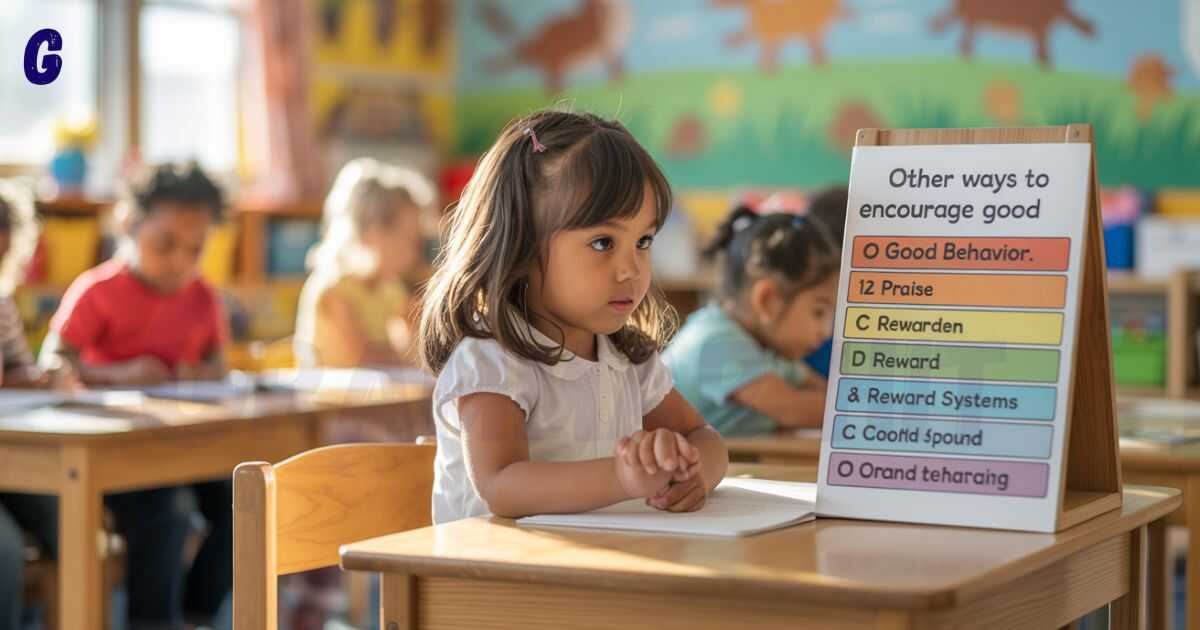Other Ways to Encourage Good Behavior: Effective parenting doesn’t always require timeouts or taking away privileges. While traditional discipline strategies have their place, modern child development research reveals numerous creative approaches that boost cooperation and build self-esteem simultaneously. These alternative methods focus on positive parenting techniques that nurture your parent-child relationship while encouraging the behaviors you want to see.
Teaching Through Real-World Experiences
Natural consequences represent one of the most powerful behavioral guidance tools available to parents. Unlike imposed punishments, these allow children to learn directly from their choices without parental intervention.
When your daughter forgets her lunch money, she experiences hunger during lunchtime. This teaches responsibility more effectively than lectures about preparation. The key lies in stepping back and allowing these learning moments to unfold naturally.
Email Example:
Subject: Homework Reminder - Natural Learning Opportunity
Hi Sarah,
I noticed you mentioned feeling stressed about tomorrow's science project. While I'd love to help you start it tonight, I remember we discussed the importance of planning ahead last month.
I'll be available if you need supplies or have questions, but the timeline management is your responsibility. This is a great chance to practice the organizational skills you'll need in high school.
Love you regardless of the outcome,
Mom
This approach demonstrates unconditional love while maintaining age-appropriate expectations. The child learns self-control development through experience rather than external pressure.
Positive Reinforcement Through Specific Recognition
Behavior reinforcement works best when it’s immediate, specific, and genuine. Instead of generic praise like “good job,” effective discipline involves acknowledging exact behaviors you want repeated.
Catch your children doing something right, then describe precisely what impressed you. This parenting strategy builds confidence while reinforcing desired behavior patterns.
Text Message Example: Specific Praise
To: Michael (Age 12)
Hey buddy! I just noticed you put your dishes in the dishwasher without being asked. That kind of responsibility makes our family time more enjoyable for everyone. Thanks for thinking ahead! 😊
This message communicates appreciation while reinforcing the connection between individual actions and family dynamics. It shows how small choices impact the entire household.
Environmental Design: Setting Up Success
Smart parents adjust their children’s environment to make good behavior easier than misbehavior. This proactive parenting style prevents many conflicts before they begin.
For toddlers, this might mean placing healthy snacks at eye level while storing less nutritious options higher up. For school-age children, it could involve creating organized homework stations that eliminate distractions.
Family Meeting Notes Example
Peterson Family Meeting - March 15th
Agenda: Morning Routine Improvements
Solutions Discussed:
- Move backpacks to hooks by front door (eliminates searching)
- Prepare clothes night before (reduces morning decisions)
- Create breakfast station with healthy options at kid height
- Install timer in bathroom (manages tooth-brushing time)
Michael suggested adding a family calendar by the door. Great idea!
Next meeting: March 29th
This family communication approach involves children in problem-solving skills development while creating systems that support success.
Emotional Coaching: Building Internal Motivation
Emotional development flourishes when parents act as coaches rather than controllers. This parenting approach teaches children to understand their feelings while developing healthy coping strategies.
When your preschooler throws a tantrum, acknowledge the emotion before addressing the behavior. “You’re really frustrated that we have to leave the playground” validates their experience while maintaining necessary boundaries.
Journal Entry Example:
Date: April 3rd
Child: Emma (Age 6)
Situation: Meltdown over bedtime
What Happened:
Emma became upset when I announced bedtime during her art project.
My Response:
"I can see you're disappointed about leaving your beautiful drawing unfinished. It's hard to stop when you're creating something special."
Emma's Reaction:
She nodded and said, "I just wanted to finish the sun." We agreed she could work on it for 5 more minutes tomorrow after school.
Lesson Learned:
Acknowledging her creative process helped her transition more peacefully. She felt heard and understood.
This documentation helps parents track what works while building emotional intelligence in their children.
Choice Architecture: Empowering Through Options
Child psychology research shows that providing controlled choices increases cooperation while developing decision-making skills. This behavior management technique gives children autonomy within safe boundaries.
Instead of “Clean your room now,” try “Would you like to start with your books or your clothes?” Both options lead to the same outcome, but the child feels empowered in the process.
Daily Schedule Example: Choice Integration
Rodriguez Family Tuesday Schedule
Morning Choices (Pick 2):
□ Make bed before breakfast
□ Choose tomorrow's outfit
□ Feed the goldfish
□ Pack your backpack
After School Options:
□ Homework first, then 30 min screen time
□ 15 min outdoor play, homework, then 15 min screens
□ Snack while doing homework, then choice time
Evening Wind-Down (Choose order):
□ Bath/shower
□ Pajamas
□ Story time
This structure provides flexibility while ensuring essential tasks get completed. Children develop responsibility through guided independence.
Collaborative Problem-Solving: Building Partnership
Modern parenting strategies emphasize collaboration over control. When behavioral challenges arise, involving children in solution-finding creates buy-in and teaches valuable life skills.
This approach works particularly well with older children and adolescents who crave respect for their developing autonomy.
Problem-Solving Email Template
Subject: Working Together on Morning Rush Solutions
Dear Jessica,
I've noticed we've both been feeling stressed during our morning routine lately. Instead of me just making new rules, I'd love your input on making mornings smoother for our whole family.
Could you think about:
- What makes mornings feel rushed for you?
- What would help you feel more prepared?
- Any ideas for streamlining our routine?
Let's chat over hot chocolate this weekend and brainstorm together. Your perspective really matters to me.
Love,
Dad
P.S. - No judgment zone! Just honest conversation about what would work better.
This communication style demonstrates respect while encouraging problem-solving skills and family cooperation.
Strength-Based Recognition: Celebrating Individual Gifts
Every child possesses unique strengths that can be leveraged for positive behavior change. Effective parenting involves identifying these gifts and connecting them to behavioral expectations.
If your child shows artistic talent, praise their creativity while encouraging them to apply that same attention to detail to homework or chores.
Strength Recognition Card Example
Special Recognition for Marcus
Your Observed Strengths:
✓ Natural leadership with younger kids
✓ Creative problem-solving abilities
✓ Persistence when something interests you
✓ Kindness toward animals
Ways to Use These Strengths:
• Help organize family game nights (leadership)
• Design chore charts for siblings (creativity)
• Tackle challenging homework step-by-step (persistence)
• Take responsibility for pet care (kindness)
Your strengths make our family stronger!
This approach builds confidence while connecting natural abilities to behavioral expectations.
Storytelling and Modeling: Indirect Teaching Methods
Children learn powerful lessons through stories and observation. This gentle guidance method avoids direct confrontation while communicating important values and expectations.
Share age-appropriate stories about characters who face similar challenges to your child. Discuss how different choices lead to different outcomes without making direct comparisons to recent behaviors.
Bedtime Story Integration Example
Tonight's Story Discussion - "The Rabbit Who Forgot"
Story Summary: A young rabbit keeps forgetting to close the garden gate, leading to escaped vegetables and hungry neighbors.
Discussion Questions for Tommy (Age 7):
- How do you think the rabbit felt when he realized his mistake?
- What could he have done differently?
- Have you ever forgotten something important?
- What helps you remember things?
Connection Point: Just like the rabbit learned to create reminders, we can find systems that help us remember our responsibilities too.
This indirect teaching method allows children to make connections without feeling criticized or defensive.
Conclusion
Encouraging good behavior requires patience, creativity, and deep understanding of child development. These alternative approaches focus on building internal motivation rather than relying solely on external consequences.
Successful parenting combines multiple strategies tailored to each child’s unique personality and developmental stage. Remember that consistency and unconditional love form the foundation for all effective behavioral guidance.
Every interaction represents an opportunity to strengthen your parent-child relationship while teaching valuable life skills. Trust the process, celebrate small victories, and maintain faith in your child’s capacity for growth and positive change.

Grammar Hit is your trusted language companion, offering expert grammar tips, practical guides, and engaging resources to help you write and communicate with confidence and clarity.

